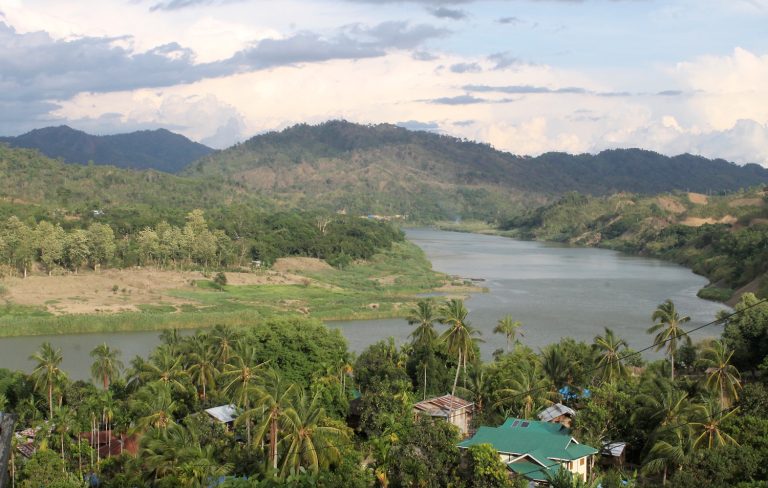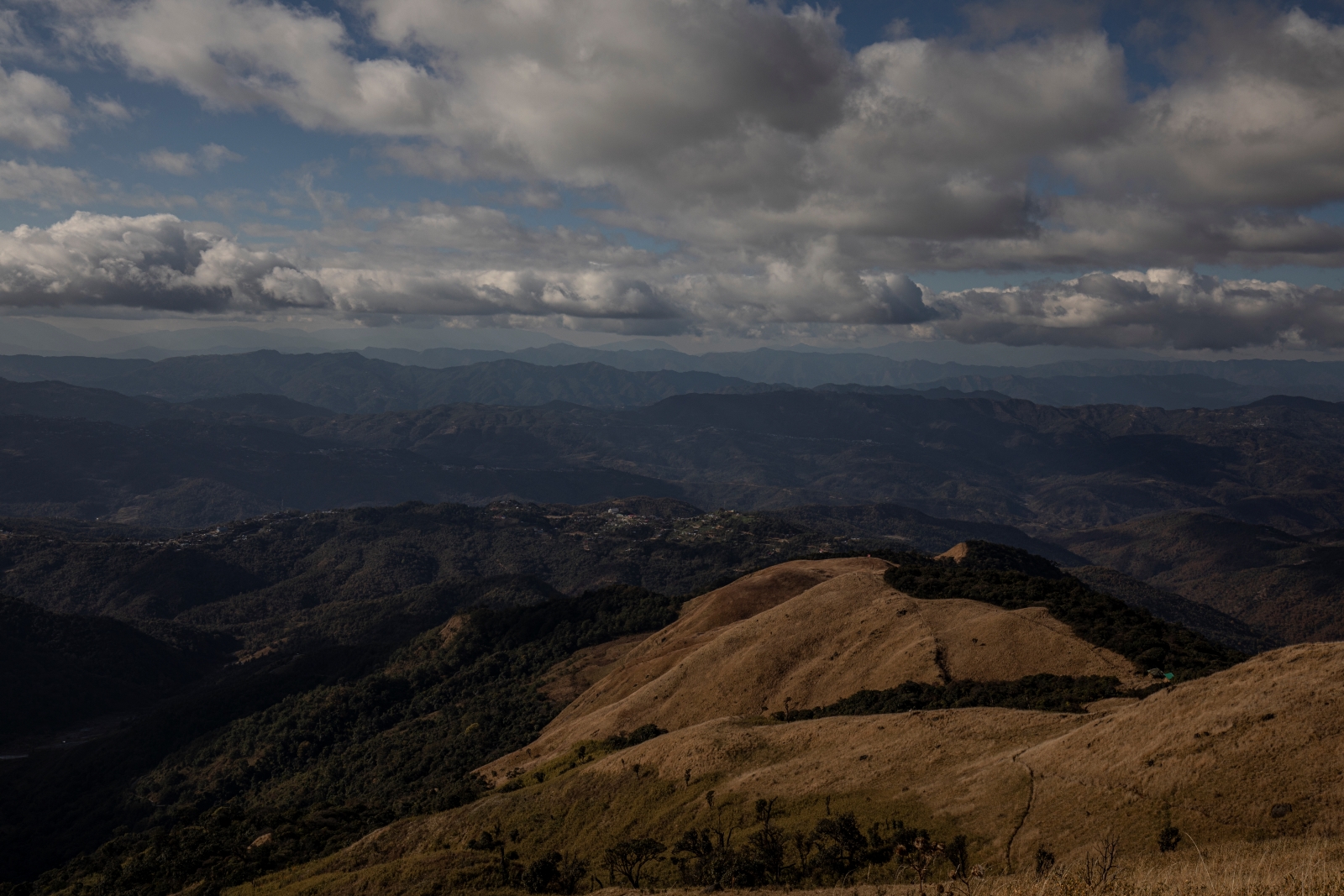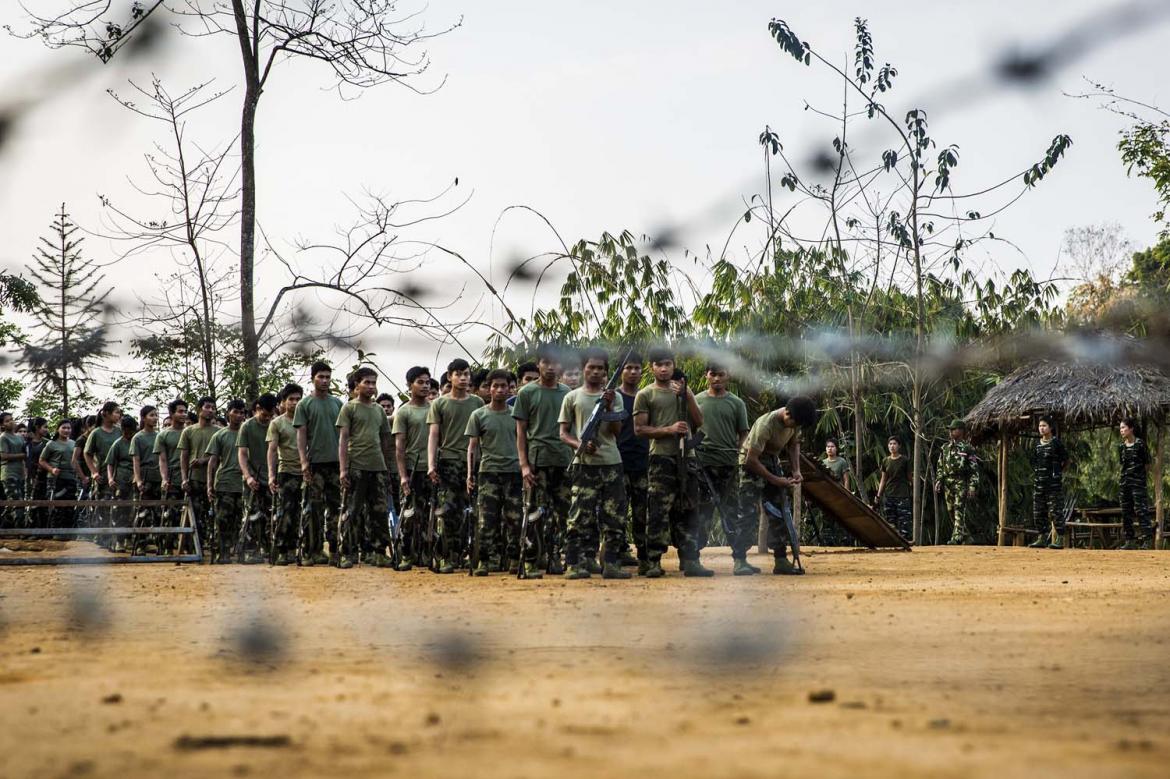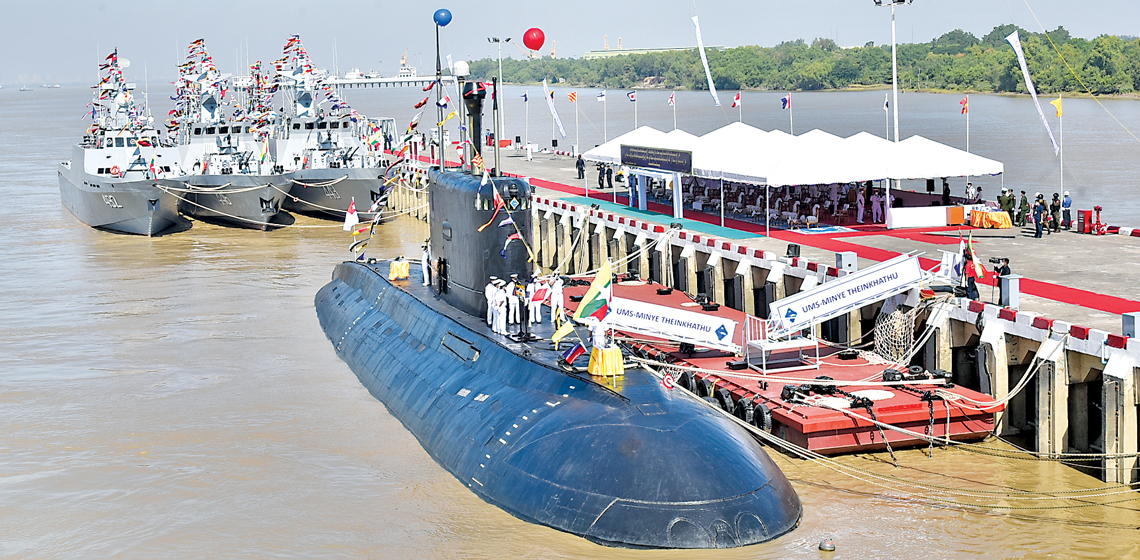India’s commitment to bilateral relations has been questioned by those who wonder if it regards Myanmar as little more than a corridor for trade with other mainland Southeast Asian countries.
By YOLA VERBRUGGEN | FRONTIER

Former Indian Prime Minister Manmohan Singh, fourth from left, shakes hands with an official ahead of a meeting with Myanmar President Thein Sein in Naypyidaw, May 2012. (AFP)
Bureaucratic inertia and regional politics will continue to ensure that Indian investment in Myanmar lags far behind that of China and Thailand, say officials and academics.
They speak of disappointment over New Delhi’s level of commitment to Myanmar, despite investment in sectors including oil and gas, the Kaladan multi-modal transport project linking Rakhine State with India’s northeast, and the opening late last month of a section of the Asian highway linking India and Thailand that will pave the way for increased trade.
At the 2014 ASEAN-India Summit in Nay Pyi Taw, Prime Minister Narendra Modi announced that after ‘Looking East’ for more than two decades, New Delhi would ‘Act East’ and introduce a proactive policy on economic, diplomatic and security cooperation with Southeast Asia. In Myanmar, officials and others are sceptical about what this would mean for India’s interest in their country.
Support more independent journalism like this. Sign up to be a Frontier member.
“When they look east, they want to look beyond Myanmar,” said U Soe Myint, a retired director-general of the Ministry of Mines. He expressed frustration at what he said was India’s view of Myanmar as being not much more than a gateway to the east.
“Historically, we feel attached to India from the time of Buddha and our joined struggle for independence [but] even though we consider them close both historically and culturally, they don’t seem to think of us that way,” said U Soe Myint.
Although India is developing Sittwe harbour in Rakhine State for a transport project and its companies have interests in offshore oil and gas blocks, most big investment projects in Myanmar have been awarded to its other neighbours, China and Thailand. A notable example is the dual pipeline that carries gas and oil across Myanmar to China. Indian companies are stakeholders in the rich Shwe gas field off Rakhine and in 2004 India began promoting a plan to send the gas to Kolkata via a pipeline across Bangladesh. Trilateral negotiations began and after New Delhi rejected an annual US$125 million transit fee demanded by Dhaka for the gas pipeline, India explored an alternative route around Bangladesh but the idea was abandoned. In June 2008, Myanmar signed a memorandum of understanding to sell gas from the Shwe field to China.
“Geo-politics coupled with bureaucratic delays have played an important role in such negotiations not getting materialised,” Sanjay Pulipaka, a consultant for the New Delhi-based Indian Council for Research on International Economic Relations, told Frontier by email.
“Bilateral economic engagement between the two countries [India and Myanmar] is less than satisfactory and there is enormous scope for significant improvements,” Mr Pulipaka said.
U Soe Myint said India has an attitude problem with Myanmar and it was obstructing cooperation on trade and investment.
“The Chinese are fast in their decision-making process. Even though Indian access is important, they do not seem so serious,” said U Soe Myint, who was involved in the negotiations.
“India always asks for many reports and numbers, China is willing to commit without all this knowledge,” he said.
International standards and the activities of civil society groups can also create challenges for India and other countries that want to invest in Myanmar. “India has very active civil society and an unhealthy approach towards extractive industries in neighbouring countries will invite rigorous scrutiny,” said Mr Pulipaka.
For Myanmar, this often results in cooperation with China. “Myanmar can’t uphold international standards, so China is the only option,” said U Soe Myint.
There has long been speculation about Chinese support for insurgent groups in northeastern India as part of a strategy by Beijing to hamper the development of closer ties between New Delhi and Nay Pyi Taw. In June, Indian media quoted intelligence sources as saying they suspected a role by China in an attack by the National Socialist Council of Nagaland-Khaplang rebel group on an army camp in Manipur that left 18 soldiers dead. Five days after the attack, Indian commandos crossed into Myanmar to launch retaliatory strikes on NSNC-K camps in near the border in Sagaing Region, in an incident that strained bilateral relations. Indian National Security Adviser Ajit Doval travelled to Myanmar after the raid to “soothe ruffled feathers,” the Times of India reported. During a visit to New Delhi in July, Foreign Minister U Wunna Maung Lwin signed an agreement with his Indian counterpart Sushma Swaraj to fight “terrorism and insurgent activity in all its forms and manifestations”. Later that month, Tatmadaw Commander-in-Chief Senior General Min Aung Hlaing travelled to India for talks on border security cooperation.
“The Chinese may not want to set India’s northeast ablaze, but it is in Beijing’s interest to cause frictions and disruptions in Burma’s relations with India,” Bertil Lintner, a veteran specialist of Myanmar affairs, wrote in The Irrawaddy. “Over the past four years, Burma has distanced itself from its old ally China – and established closer contacts not only with the West but also India. A closer, more cordial relationship between Burma and India is not in China’s interest. Instability along the border – rebel raids into India and retaliatory, Indian cross-border attacks – would serve that purpose,” Mr Lintner wrote.
Myanmar and India share a 1,643-kilometre border, much of which is porous. NSNC-Khaplang is one of several insurgent groups in northeastern India that have bases on the Myanmar side of the border. The Indian insurgents are not a priority for the Tatmadaw because it is focussed on Myanmar’s long-running civil conflicts.
Although the two countries have a shared history of colonisation by the British, bilateral relations have experienced strains because of the political developments in Myanmar. Diplomatic ties were strained after the Tatmadaw seized power in a coup in 1962 and then Prime Minister U Nu fled to India, where he remained until he was granted an amnesty in the 1980s. His daughter, Daw Than Than U, lived in India until she returned to her homeland in 2003. Bilateral relations were also strained after the national uprising in Myanmar in 1988 was crushed in a brutal military crackdown that resulted in many activists finding a safe haven in India. They included two young activists who hijacked a flight from Bangkok to Yangon and forced it to fly to Kolkata where a court soon after acquitted them of hijacking. One of them later co-founded the exile media organisation, Mizzima, which was based in New Delhi for 15 years until it relocated to Yangon in 2012.
During the 1990s, India chose to engage with the military junta and relations gradually improved amid closer cooperation on trade and border security. The Indian government had previously championed opposition leader Daw Aung San Suu Kyi, on whom it bestowed the Jawaharlal Nehru Award for International Understanding in 1993, making her the second Myanmar to receive the honour after its inaugural recipient, former United Nations Secretary General U Thant, in 1965.
India’s changed stance towards Myanmar was evident during the monk-led protests in 2007 known as the Saffron Revolution, when then Petroleum Minister Murli Deora visited to discuss energy cooperation. The visit triggered a protest in New Delhi that called on the government to put democracy and human rights ahead of energy and economic ties. “It is a shame for the world’s largest democracy to send its cabinet minister to Burma for reasons of exploiting more natural gas from the country at the time people and monks are protesting against the fuel shortages and economic hardships in Burma,” the protesters said in a statement.
In a 2008 paper published by the Institute of South Asian Studies at the National University of Singapore, Marie Lall said Mr Deora had signed a deep sea block deal with the Myanmar government that involved an investment of $150 million over a few years.
The visit “exemplifies how India’s foreign policy has changed and how Indo-Myanmar relations are indeed now based on energy security and trade issues,” Dr Lall wrote.
When Foreign Minister U Wunna Maung Lwin travelled to New Delhi in the aftermath of the cross-border raid by Indian commandos, his itinerary included a meeting with Prime Minister Modi.
Media reports said Mr Modi called for greater bilateral cooperation on a range of issues and also “reaffirmed India’s position as a reliable partner in Myanmar’s development … and highlighted the importance of Myanmar for peace and stability in the region, and for India’s connectivity with Southeast Asia.”






